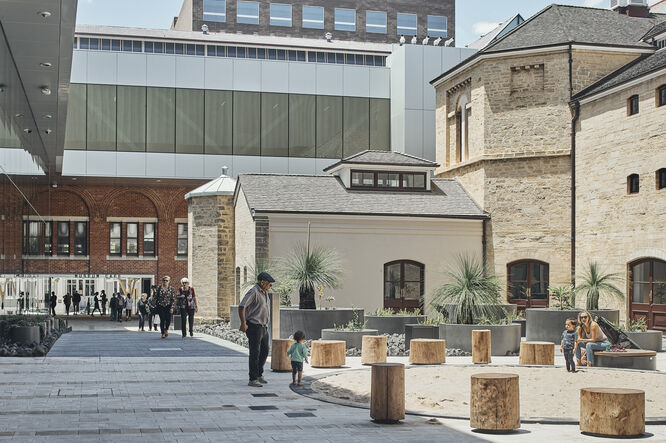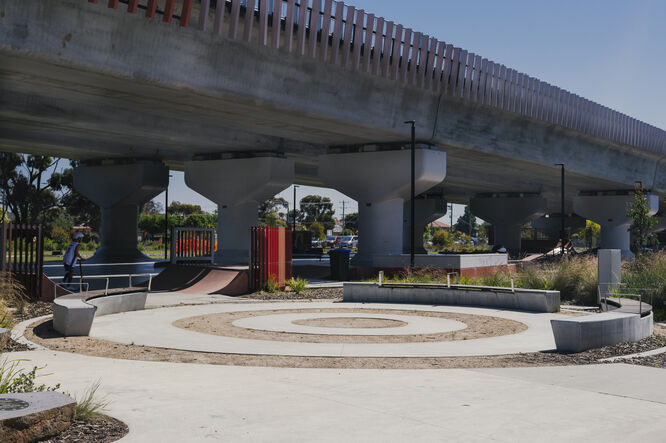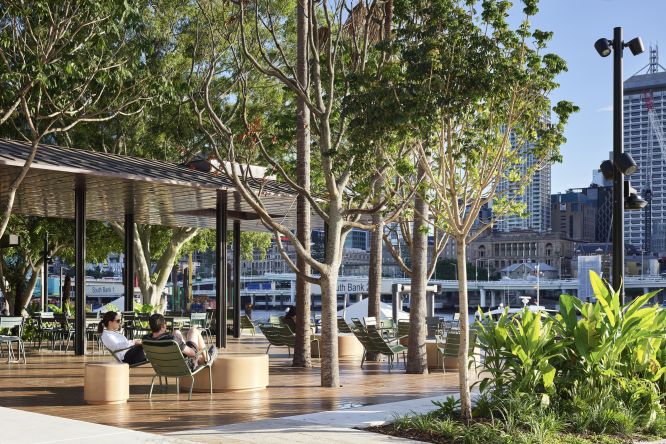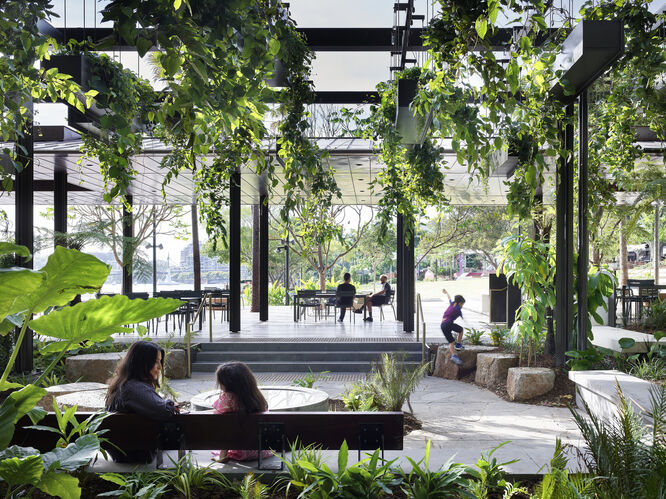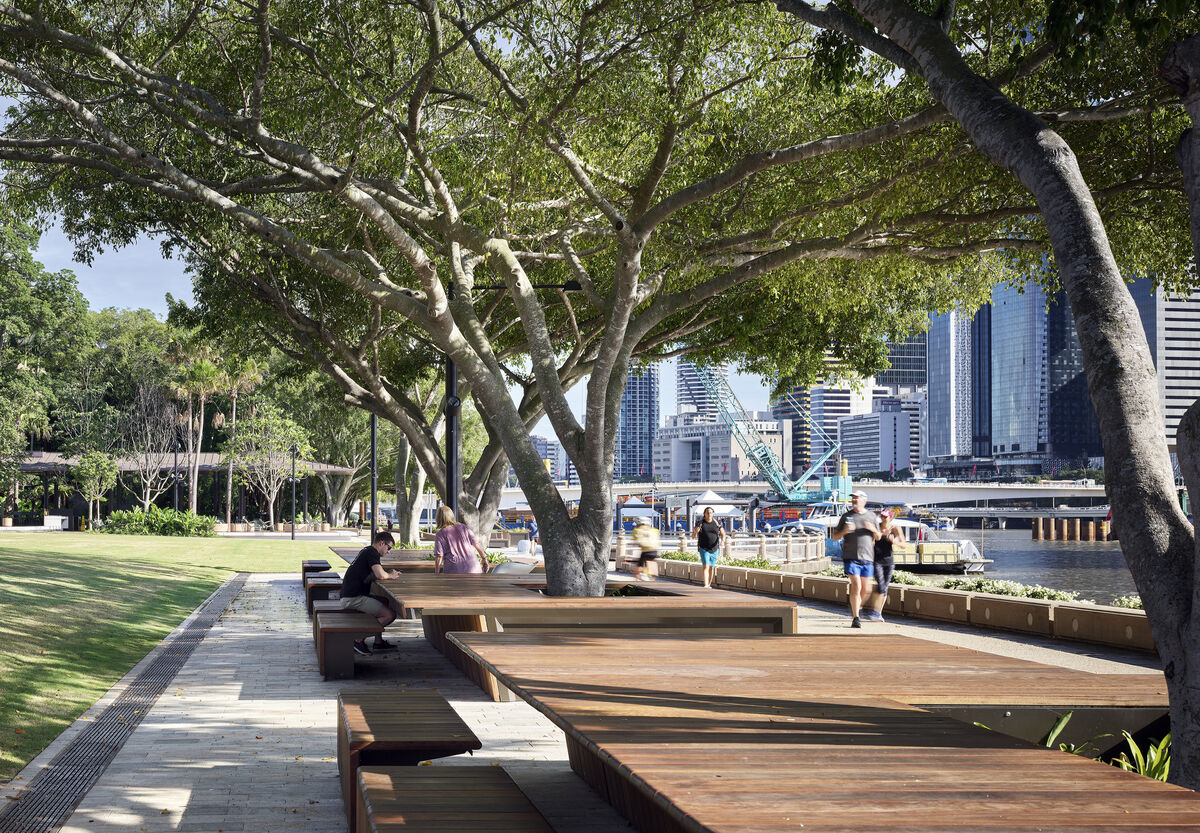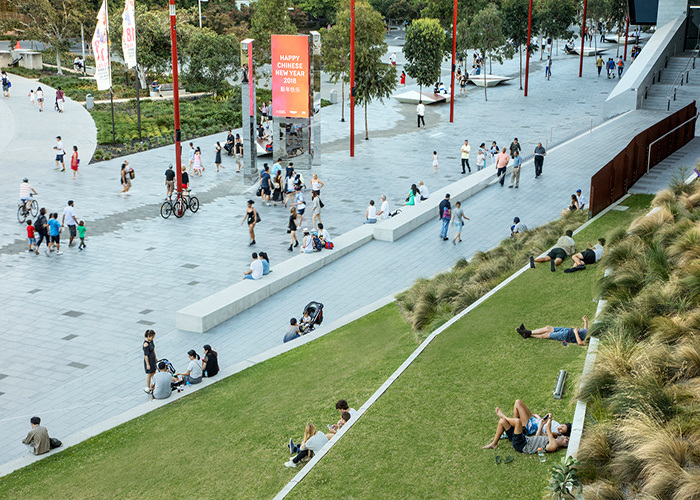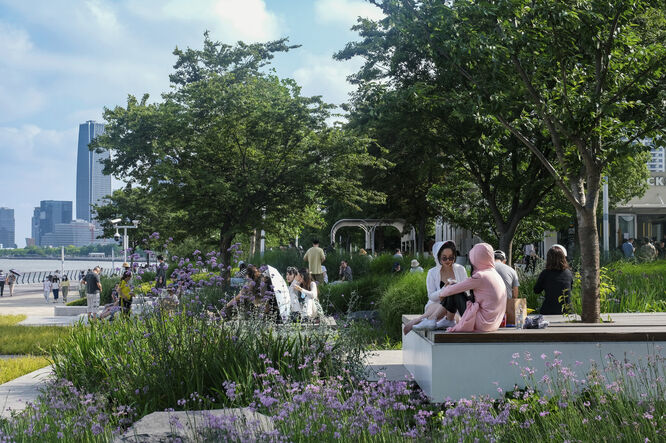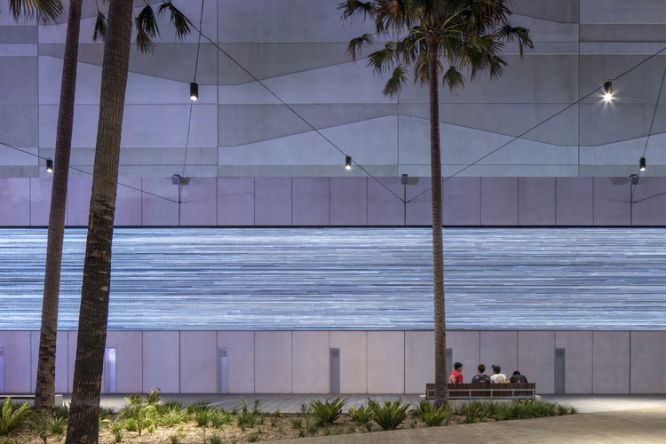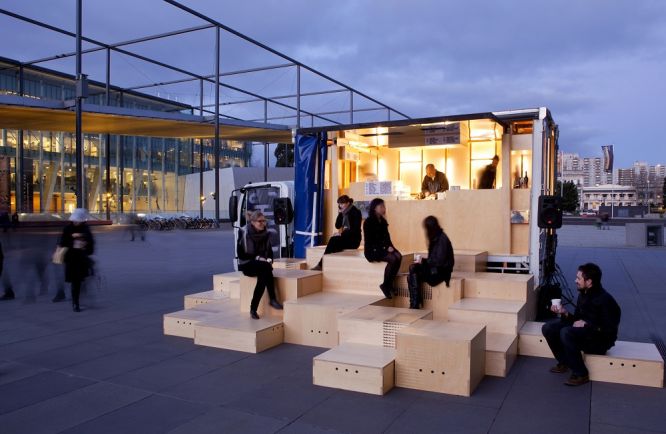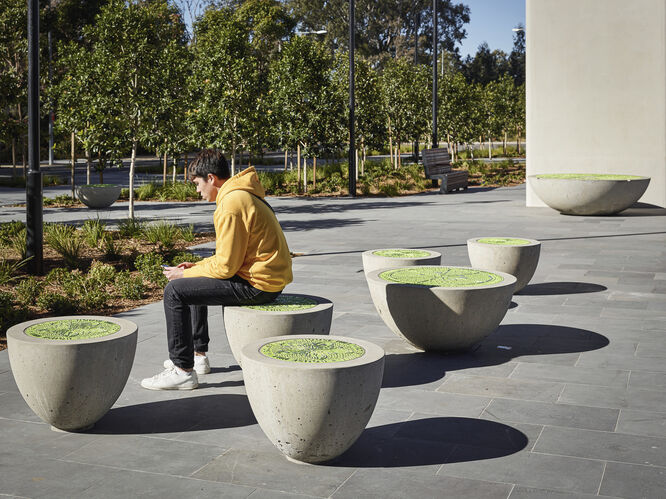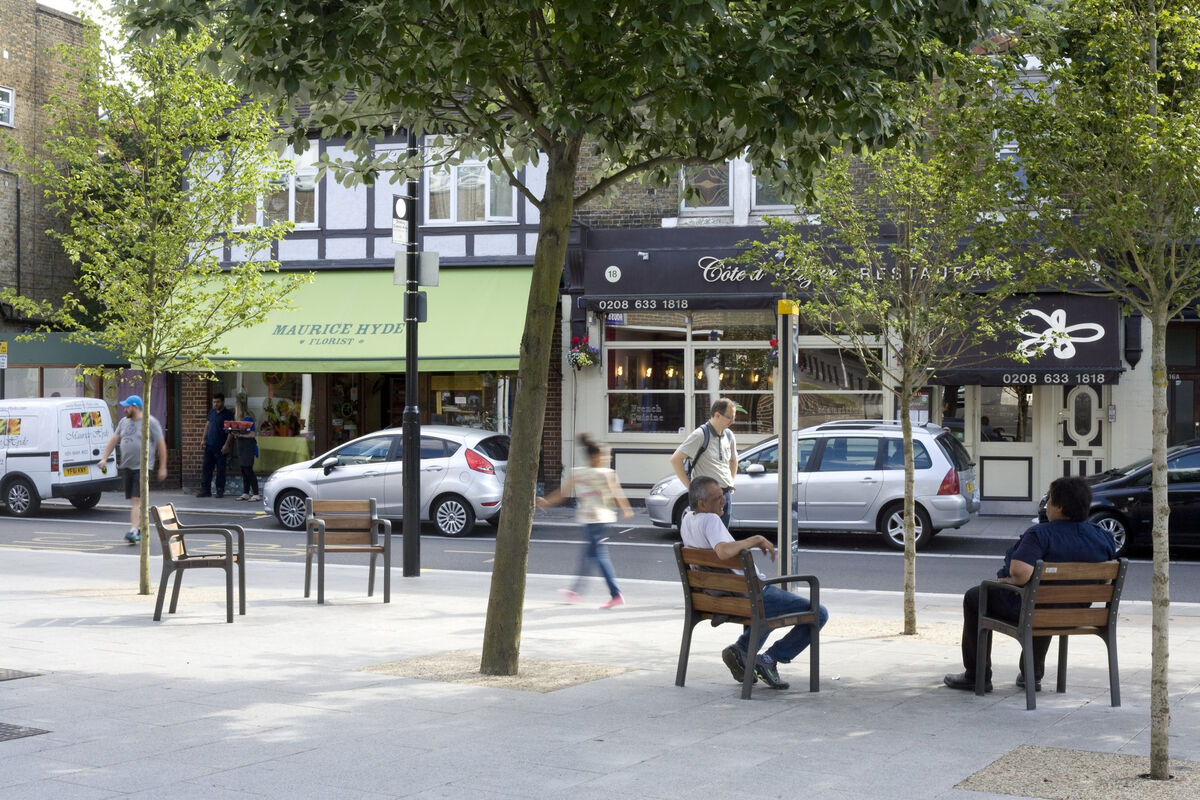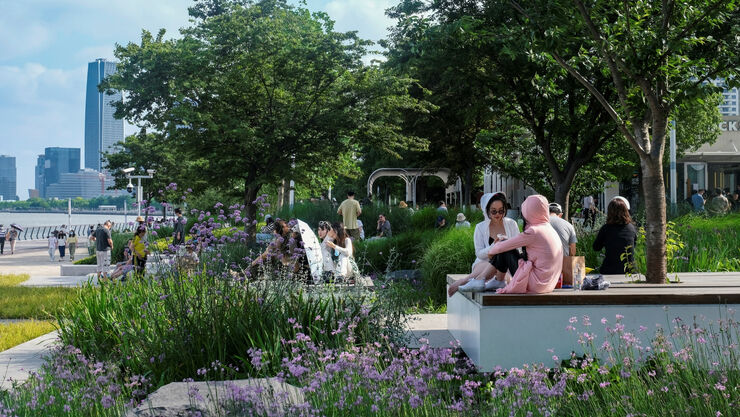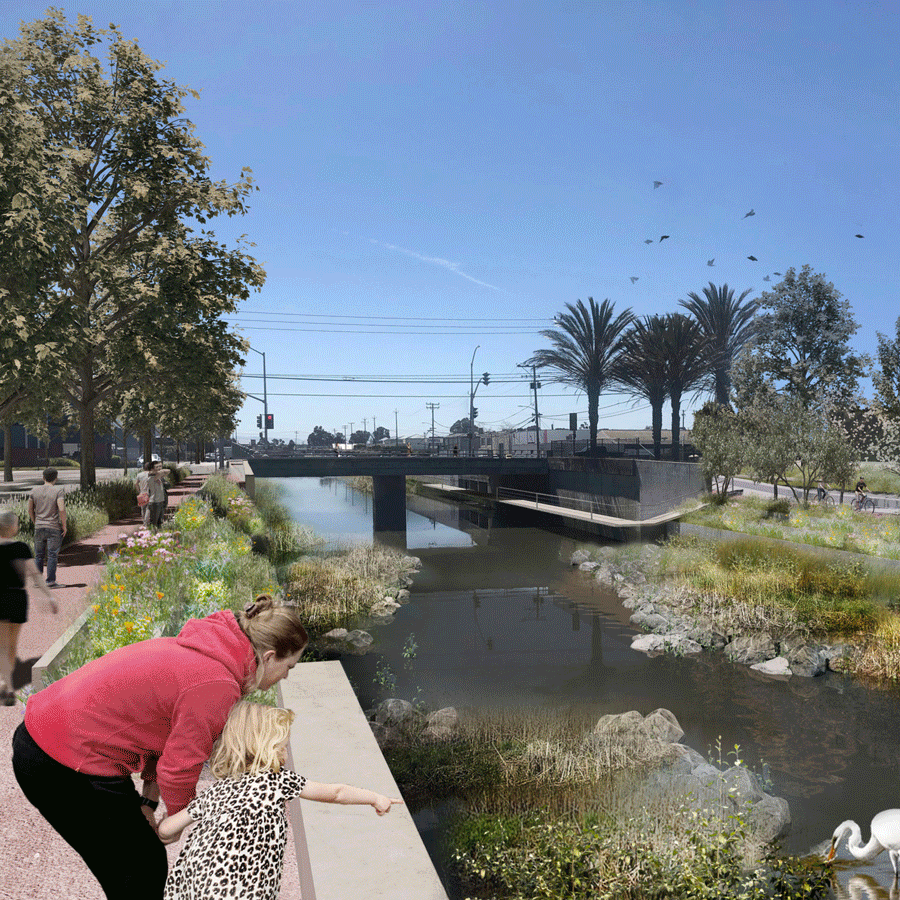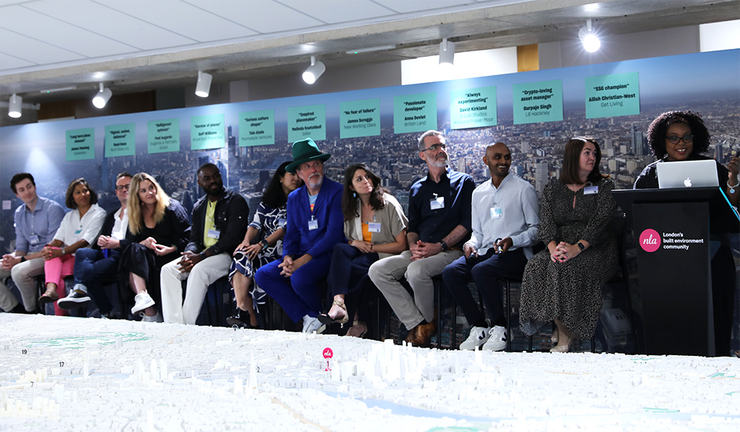CONSIDERING THE ROLE OF QUALITY AND CONTEXT
Public seating consistently emerges as a linchpin in the pursuit of creating vibrant landscapes, where people can linger, connect, and form an attachment to their surroundings. However, the success of these places is not necessarily ensured by the random introduction of benches and seating. Consideration of contextual factors is paramount, encompassing the seating design and the specific location and direction in which it is placed.
For example, to foster enough comfort for people to willingly dwell and engage, the design must extend well beyond ergonomic considerations, hinging on flexibility to allow for the personal shaping of experience, a pervasive sense of safety, access, and a reason to pause.
Riverside Green, Darling Harbour, and the West Bund strategically position seating to meet these needs. Placing benches, chairs, and planters along busy thoroughfares creates opportunities for people to slow down without compromising views and visibility. Additionally, each location is carefully illuminated at night and incorporates moments of shade and sunlight during the day, contributing not only to physical comfort but also embedding a perceived sense of safety.

